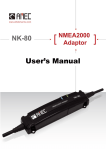Download View PDF - Oracle Documentation
Transcript
Oracle® Real User Experience Insight
Accelerator for Oracle E-Business Suite Guide
Release 1.1 for Linux x86-64
E13494-06
April 2009
Oracle Real User Experience Insight Accelerator for Oracle E-Business Suite Guide Release 1.1 for Linux
x86-64
E13494-06
Copyright © 2009 Oracle and/or its affiliates. All rights reserved.
Primary Author: Paul Coghlan
Contributing Author: Robert Brouwer
The Programs (which include both the software and documentation) contain proprietary information; they
are provided under a license agreement containing restrictions on use and disclosure and are also protected
by copyright, patent, and other intellectual and industrial property laws. Reverse engineering, disassembly,
or decompilation of the Programs, except to the extent required to obtain interoperability with other
independently created software or as specified by law, is prohibited.
The information contained in this document is subject to change without notice. If you find any problems in
the documentation, please report them to us in writing. This document is not warranted to be error-free.
Except as may be expressly permitted in your license agreement for these Programs, no part of these
Programs may be reproduced or transmitted in any form or by any means, electronic or mechanical, for any
purpose.
If the Programs are delivered to the United States Government or anyone licensing or using the Programs on
behalf of the United States Government, the following notice is applicable:
U.S. GOVERNMENT RIGHTS Programs, software, databases, and related documentation and technical data
delivered to U.S. Government customers are "commercial computer software" or "commercial technical data"
pursuant to the applicable Federal Acquisition Regulation and agency-specific supplemental regulations. As
such, use, duplication, disclosure, modification, and adaptation of the Programs, including documentation
and technical data, shall be subject to the licensing restrictions set forth in the applicable Oracle license
agreement, and, to the extent applicable, the additional rights set forth in FAR 52.227-19, Commercial
Computer Software--Restricted Rights (June 1987). Oracle USA, Inc., 500 Oracle Parkway, Redwood City, CA
94065.
The Programs are not intended for use in any nuclear, aviation, mass transit, medical, or other inherently
dangerous applications. It shall be the licensee's responsibility to take all appropriate fail-safe, backup,
redundancy and other measures to ensure the safe use of such applications if the Programs are used for such
purposes, and we disclaim liability for any damages caused by such use of the Programs.
Oracle, JD Edwards, PeopleSoft, and Siebel are registered trademarks of Oracle Corporation and/or its
affiliates. Other names may be trademarks of their respective owners.
The Programs may provide links to Web sites and access to content, products, and services from third
parties. Oracle is not responsible for the availability of, or any content provided on, third-party Web sites.
You bear all risks associated with the use of such content. If you choose to purchase any products or services
from a third party, the relationship is directly between you and the third party. Oracle is not responsible for:
(a) the quality of third-party products or services; or (b) fulfilling any of the terms of the agreement with the
third party, including delivery of products or services and warranty obligations related to purchased
products or services. Oracle is not responsible for any loss or damage of any sort that you may incur from
dealing with any third party.
Contents
Preface ................................................................................................................................................................. v
1 Installation and Configuration
1.1
1.2
1.3
1.4
1.5
1.6
1.7
1.8
1.9
1.10
1.11
1.12
Why Use This Accelerator Pack? .............................................................................................. 1-1
Working Within a Forms-Only Environment......................................................................... 1-1
Overview...................................................................................................................................... 1-3
Enabling End User or Chronos Monitoring ............................................................................ 1-4
Enable Forms Over SSL Instead of Forms Encryption .......................................................... 1-5
Installing the Package RPMs ..................................................................................................... 1-6
Verifying the Scope of Monitoring ........................................................................................... 1-6
Specifying the Cookie Technology ........................................................................................... 1-7
Creating the EBS Suite Definition............................................................................................. 1-8
Synchronizing RUEI With The EBS Production Environment.......................................... 1-10
Verifying and Evaluating Your Configuration.................................................................... 1-11
Known Limitations .................................................................................................................. 1-12
2 Monitoring and Reporting Considerations
2.1
2.2
2.3
2.4
2.5
2.6
2.6.1
2.7
Hostnames and URL Prefixes ...................................................................................................
Database Tables...........................................................................................................................
Actions, Pages, and Objects .......................................................................................................
Functional Errors.........................................................................................................................
OA Framework Page Name Deduction...................................................................................
Page Context ................................................................................................................................
Request and Page Boundaries............................................................................................
Resources......................................................................................................................................
2-1
2-3
2-4
2-4
2-5
2-5
2-6
2-7
A Checking Socket and Servlet Mode
B Troubleshooting
B.1
B.2
Suites Option Not Available..................................................................................................... B-1
Network Traffic Does Not Appear to be Measured ............................................................. B-1
C Third-Party Licenses
iii
iv
Preface
Oracle Real User Experience Insight (RUEI) provides you with powerful analysis of
your network and business infrastructure. You can monitor the real-user experience,
define Key Performance Indicators (KPIs) and Service Level Agreements (SLAs), and
trigger alert notifications for incidents that violate them.
Audience
This document is intended primarily for the Administrator responsible for
maintaining the RUEI installation. It describes how your RUEI installation can be
extended to provide specific support for the monitoring of Oracle E-Business Suite
(EBS) applications.
Important
If your monitored Web environment contains EBS applications, is it strongly
recommended that you make use of this support. It not only saves time in the
configuration of your EBS applications within RUEI, considers the specific
characteristics of the different frameworks upon which EBS applications are built, and
makes these applications more compatible, but also ensures that EBS applications are
monitored correctly.
The information provided in this guide is specific to RUEI release 4.5.1 (or any higher
maintenance release). If you upgrade your RUEI installation to a higher version, you
will also need to upgrade to the latest version of this package.
The monitoring support provided by this package has been verified against EBS R12.
However, it is designed to work equally well with other versions of EBS.
End User Monitoring requires Oracle Forms 6i with patch 7130248, or release 10g R2 or
higher.
Prerequisites
The Administrator should have firm operational knowledge of their organization’s
network and application environment. In addition, they should have a good
understanding of the EBS architecture. Note that assistance from the EBS
administrator or application specialist may also be required.
Before proceeding with the configuration procedure described in this guide, RUEI
should already have been successfully placed within your organization’s network, and
the Initial Setup Wizard run to provide information about the network infrastructure.
The procedure to do this is fully described in the Oracle Real User Experience Insight
Installation Guide.
v
The RUEI application is a non-intrusive solution to the monitor the production
environment, without touching it. By default, the Forms protocol does not send all
information relevant for monitoring over the line. Therefore, the Forms server requires
some different configuration settings. To apply these settings, a restart of the Forms
server is required.
Oracle Forms Support
Oracle Forms can be configured in two modes: servlet and socket. In servlet mode, a
Java servlet (called the Forms Listener servlet) manages the communication between
the Forms Java client and the OracleAS Forms services. In socket mode, the desktop
clients access the Forms server directly. Currently, the RUEI accelerator for E-Business
Suites only supports servlet mode. If sockets mode is used within your applications,
the performance of individual form actions cannot be detected. A detailed description
of the operation and configuration of Oracle Forms in servlet and socket mode is
available at http://metalink.oracle.com/metalink/plsql/ml2_
documents.showNOT?p_id=384241.1.
See Appendix A for information about verifying the mode in which Oracle Forms is
configured.
Using This Guide
This guide is organized as follows:
■
■
■
■
■
Chapter 1, "Installation and Configuration" describes how to install and configure
the RUEI EBS Package for the monitoring of EBS-based applications.
Chapter 2, "Monitoring and Reporting Considerations" provides additional
information about the EBS frameworks relevant to the monitoring of EBS
applications in RUEI.
Appendix A, "Checking Socket and Servlet Mode" presents a description of how to
check whether the Oracle Forms server is running in servlet or socket mode.
Appendix B, "Troubleshooting" highlights the most common problems
encountered when installing the RUEI accelerator for Oracle E-Business Suite.
Appendix C, "Third-Party Licenses" contains licensing information about certain
third-party products included with RUEI.
Documentation Accessibility
Our goal is to make Oracle products, services, and supporting documentation
accessible to all users, including users that are disabled. To that end, our
documentation includes features that make information available to users of assistive
technology. This documentation is available in HTML format, and contains markup to
facilitate access by the disabled community. Accessibility standards will continue to
evolve over time, and Oracle is actively engaged with other market-leading
technology vendors to address technical obstacles so that our documentation can be
accessible to all of our customers. For more information, visit the Oracle Accessibility
Program Web site at http://www.oracle.com/accessibility/.
Accessibility of Code Examples in Documentation
Screen readers may not always correctly read the code examples in this document. The
conventions for writing code require that closing braces should appear on an
otherwise empty line; however, some screen readers may not always read a line of text
that consists solely of a bracket or brace.
vi
Accessibility of Links to External Web Sites in Documentation
This documentation may contain links to Web sites of other companies or
organizations that Oracle does not own or control. Oracle neither evaluates nor makes
any representations regarding the accessibility of these Web sites.
Deaf/Hard of Hearing Access to Oracle Support Services
To reach Oracle Support Services, use a telecommunications relay service (TRS) to call
Oracle Support at 1.800.223.1711. An Oracle Support Services engineer will handle
technical issues and provide customer support according to the Oracle service request
process. Information about TRS is available at
http://www.fcc.gov/cgb/consumerfacts/trs.html, and a list of phone
numbers is available at http://www.fcc.gov/cgb/dro/trsphonebk.html.
Related Documents
For more information, see the following documents in the Oracle Real User Experience
Insight library:
■
Oracle Real User Experience Insight Installation Guide
■
Oracle Real User Experience Insight User Guide
Conventions
The following text conventions are used in this document:
Convention
Meaning
boldface
Boldface type indicates graphical user interface elements associated
with an action, or terms defined in text or the glossary.
italic
Italic type indicates book titles, emphasis, or placeholder variables for
which you supply particular values.
monospace
Monospace type indicates commands within a paragraph, URLs, code
in examples, text that appears on the screen, or text that you enter.
vii
viii
1
Installation and Configuration
1
This chapter describes the procedure for installing the EBS Package, and configuring
your application definitions within RUEI to enable the accurate monitoring of
EBS-based applications.
1.1 Why Use This Accelerator Pack?
This accelerator package for RUEI enables out-of-the-box monitoring of EBS modules.
This monitoring supports user session tracking, the discovery of end-user performance
issues, and the identification of application issues associated with EBS modules
running both the OA and JTT frameworks, as well as Oracle Forms applications
running in servlet mode.
This accelerator package automatically discovers all installed EBS modules, and
translates network objects to business functions. This facilitates the measurement and
monitoring of real-user transactions, from initial query to their commit as part of
business transactions. Individual user actions are automatically matched to the correct
module, form, or formblock in order to provide contextual analysis. This
state-of-the-art monitoring solution supports the creation of KPIs for critical packaged
applications, and the analysis of real-user business transactions.
1.2 Working Within a Forms-Only Environment
The information presented in this guide is relevant to all EBS customers. However,
customers working within a Forms-only environment should pay particular attention
to the issues highlighted in this section.
In order for RUEI to accurately report on EBS-based applications, it needs information
about your production environment. In particular, it needs to map functional areas to
reported names. As explained in Section 1.10, "Synchronizing RUEI With The EBS
Production Environment", this is done through running the create_EBS_info.sh
script. Customers within Forms-only environments are also recommended to run this
script and upload the generated .txt files.
Manually Creating Functional Mappings
The create_EBS_info.sh script uses a number of EBS database tables to retrieve
information about the installation and configuration of your Oracle Forms instance.
The exact database tables used are fully described in Section 2.2, "Database Tables".
However, the APPLSYS.FND_APPLICATION, APPLSYS.FND_APPLICATION_TL,
APPLSYS.FND_FORM, APPLSYS.FND_FORM_TL and other tables used by the script
do not exist in a Forms-only environment. Therefore, you can either rely on the default
Installation and Configuration
1-1
Working Within a Forms-Only Environment
(template) mappings provided with RUEI (described later in this section), or you can
specify the required mappings by creating the associated .txt files manually.
When creating these files manually, the following tab-separated files are required:
■
EBS_formname2details.txt: specifies a functional description for each form.
Each line in the file should have the following format:
formname{TAB}form_description
For example:
ADSAPCRD
ADSAPPRC
ADSCONC
ADSCONC
ADSCSCRC
ADSMAILI
ADSRSETUP
ADSSOE
ADSSOE
AKDAPREG
■
Credit Card Expense Transaction Entry
Procurement Card Transaction Entry
Running Jobs
Tax Locations
Healthcare CC
Mail Information
ADS Repurpose Setup
Custom Order Entry
View Person Life Event Information
Application Module Parameters Registry
EBS_formname2appshort.txt: specifies the short (3-letter) version of the
application name of which each form is part. Each line in the file should have the
following format:
formname{TAB}short_application_name
For example:
ADSAPCRD
ADSAPPRC
ADSCONC
ADSCSCRC
ADSMAILI
ADSRSETUP
ADSSOE
AKDAPREG
AKDATTRS
AKDFLOWB
■
ads
ads
ads
ads
ads
ads
ads
ak
ak
ak
EBS_appsort2appname.txt: specifies the mapping between the short (3-letter)
application name and the full application name. It has the following format:
short_application_name{TAB}application_name
For example:
abm
ad
ads
ads_dev
ahl
ahm
ak
alr
ame
amf
Activity Based Management (Obsolete)
Applications DBA
Applications Demonstration Services
ADS Development
Complex Maintenance Repair and Overhaul
Hosting Manager(Obsolete)
Common Modules-AK
Alert
Approvals Management
Fulfillment Services (Obsolete)
Be aware the created configuration files must be uploaded for each required suite in a
.zip file. This may only contain non-empty .txt files. In addition, all files must be in
1-2 Oracle Real User Experience Insight Accelerator for Oracle E-Business Suite Guide
Overview
the root directory. That is, subdirectories are not permitted. It is important you upload
the correct configuration file for the required suite, and that it is based on the actual
production environment. The procedure to update the configuration file is fully
described in Section 1.10, "Synchronizing RUEI With The EBS Production
Environment".
Relying on the Default (Template) Mapping
If manually creating the required mappings is not practical, you can simply rely on the
default (template) mappings already configured within RUEI. While this approach
provides an adequate level of reporting, it is subject to the following restrictions:
■
■
■
form_name: normally this would be the 8-character technical name translated to a
functional description. However, because this is not available, the 8-character
technical name is reported instead.
app: normally this would be derived from the mapping file that connects the form
name with the application. However, because this is not available, the first three
letters of the form name are reported instead.
application_name: normally this would be derived from the mapping file.
However, because this is not available, the app is reported instead. For example,
"eds" instead of "Application Demonstration Services" as shown in Figure 2–1.
Keeping Matching Information up-to-date
Because Forms-only environments typically change over time, it is strongly
recommended that you regularly review your mapping information. Be aware the
above restrictions will also apply to any forms that have been added to your
environment since your last ran the create_EBS_info.sh script or manually
created the mapping files.
1.3 Overview
EBS is based on several frameworks. Because these frameworks allow customers to
extend their applications with their own functionality, RUEI requires information
about their implementation in order to correctly monitor them.
The EBS monitoring functionality provided with this package supports all
out-of-the-box EBS functionality, as well as some level of customization. It is possible
that certain EBS customizations may provide unexpected reporting results within
RUEI. This mainly concerns the mapping of functional areas to reported names.
In order to facilitate the correct monitoring of EBS-based applications by RUEI, you
need to do the following:
1.
Configure the Oracle Forms server to enable End User Monitoring. While RUEI is
100% non-intrusive, you will need to re-start your EBS server after changing this
option.
2.
(Optionally) enable Forms over SSL instead of Forms-encryption.
3.
Install the package RPMs on the RUEI Reporter system.
4.
Verify the scope of monitored traffic.
5.
Specify the cookie technology used to track user sessions.
6.
Create and configure the EBS suite(s) required for your EBS-based applications.
7.
Run the create_EBS_info.sh script on the EBS production environment.
8.
Verify and evaluate the EBS suite configuration.
Installation and Configuration
1-3
Enabling End User or Chronos Monitoring
Each of these steps are discussed in more detail in the following sections.
1.4 Enabling End User or Chronos Monitoring
End User Monitoring is Forms functionality that triggers additional information
messages to be sent by the applet to the Web server. These additional messages are
required by RUEI to retrieve screen definitions (such as formname) that are otherwise
not sent over the connection. End User Monitoring functionality was introduced in
Forms 6i as Chronos messaging. This functionality is not available in Oracle Forms
9.0.4. In release 10.1.2 and higher, this functionality is called End User Monitoring.
Depending on the Oracle Forms version you are using, follow the procedure described
in the relevant section below. If you are not using Oracle Forms, the rest of this section
can be skipped.
Enabling End User Monitoring (for Oracle Forms Version 10.1.2 and Higher)
The following steps are required to activate End User Monitoring for release 10.1.2 and
higher.
1.
Configure the ORACLE_HOME/forms/server/formsweb.cfg file to enable
monitoring of specific applications. Set the following:
EndUserMonitoringEnabled=true
EndUserMonitoringURL=http://EBS-hostname:EBS-portnumber/oracle_smp_
chronos/oracle_smp_chronos_sdk.gif
2.
Restart the Forms server to activate the changes. The changes will only become
available for new sessions.
Additional information can be found in the Oracle Application Server Forms Services
Deployment Guide 10g Release 2 (10.1.2). This is available at
http://download.oracle.com/docs/cd/B25527_
01/doc/frs/forms/B14032_02/chronos.htm#sthref606. The webcache
functionality mentioned in that guide is not required for the correct working of RUEI.
The URL mentioned in the guide is incorrect, and is clarified in later release notes.
Enabling Chronos Monitoring (for Oracle Forms Version 6i)
For Forms release 6i, Chronos monitoring should be used as an alternative to the
procedure described above. To enable Chronos monitoring, do the following:
1.
Ensure that the patch 7130248 for release 6.0.8.28.0 is installed on the Oracle Forms
system.
2.
Configure the ORACLE_HOME/forms/server/formsweb.cfg file by adding the
following lines:
ChronosEnabled=true
ChronosURL=http://EBS-hostname:EBS-portnumber/oracle_smp_chronos/oracle_smp_
chronos_sdk.gif
Note: The ChronosEnabled and EndUserMonitoringEnabled
settings are case sensitive, and should be set to true.
Verifying Chronos End User Monitoring
Verify that Chronos hits are sent by doing the following:
1.
Login to Forms.
1-4 Oracle Real User Experience Insight Accelerator for Oracle E-Business Suite Guide
Enable Forms Over SSL Instead of Forms Encryption
2.
Open the Java console of the JVM in which Oracle Forms is running.
3.
Activate trace level 2 by pressing 2.
4.
Perform some Forms-based action that leads to a commit.
5.
Verify that the reported trace output contains the file /oracle_smp_
chronos/oracle_smp_chronos_sdk.gif. An example is shown in
Figure 1–1:
Figure 1–1 Java Console
6.
Confirm the hit appears in the log files on the RUEI Reporter system using the
following command as the moniforce user:
zgrep oracle_smp_chronos
$WEBSENSOR_HOME/data/*/http/currentdate/http-*
Note that the use of the timestamp in the above command is to limit the displayed
list. The currentdate should be specified in the form yyyymmdd.
1.5 Enable Forms Over SSL Instead of Forms Encryption
By default, Oracle Forms traffic is send over the HTTP layer. (The socket version is not
supported in combination with RUEI). To obscure the information sent over the line, a
propriety Forms encryption method is used. This encryption is not assumed to be
secure. Instead, the use of SSL encryption is recommended when information is sent
over the Internet.
In order to allow RUEI to measure functional errors, Forms-encryption should be
disabled, and SSL encryption used instead. Please refer to your Web server’s product
documentation for information on how to enable SSL encryption. In addition, it is
recommended that you read the relevant sections of the Oracle Real User Experience
Insight User Guide for information how SSL-encrypted traffic can be measured within
RUEI.
Installation and Configuration
1-5
Installing the Package RPMs
The Forms encryption can be influenced by an environment variable set in the
default.env file used by the Forms server. This variable differs depending on the
Forms version. For example:
FORMS60_MESSAGE_ENCRYPTION=false
FORMS_MESSAGE_ENCRYPTION=false
A restart of the Forms server is required to activate the setting.
1.6 Installing the Package RPMs
Note it is assumed a working RUEI system has been installed and configured (as
described in the Oracle Real User Experience Insight Installation Guide), and is fully
operational. Install the EBS support package on the RUEI reporter system using the
following commands as the root user:
cd /root/RUEI/45
rpm -Uhv ux-suites-ebs-*.x86_64.rpm
Note the location of the RPM depends on where you unzipped the package.
1.7 Verifying the Scope of Monitoring
Often the EBS software is configured to use a non-standard port, such as 8000. The
port on which your EBS installation is running can be found by examining the login
URL. This takes the following format:
https(s)://hostname:portnumber/OA_HTML/AppsLogin
Verify that the portnumber is configured as one of the defined ports (HTTP or
HTTPS). In addition, if a HTTPS port is specified, ensure that a copy of the Web
server’s private SSL key is imported into the Collector system.
To verify the port number, do the following:
1.
Select Configuration, then Security, and then Protocols. The currently monitored
ports are displayed. An example is shown in Figure 1–2:
Figure 1–2 Monitored Ports
2.
Use the View menu to select each Collector. The System (localhost) item represents
the local server system.
3.
If the port number is not already listed, click the required protocol (HTTP or
HTTPS). The dialog shown in Figure 1–3 appears.
1-6 Oracle Real User Experience Insight Accelerator for Oracle E-Business Suite Guide
Specifying the Cookie Technology
Figure 1–3 Edit Collector Ports
To add a new port number, enter the required number in the Port number field,
and click Add. The default Oracle Forms port is 8000. Note, if required, this needs
to be manually added. To remove a port from the list, click the Remove icon to the
right of the port number. When ready, click Save.
4.
For each Collector, you are prompted to restart the Collector. This is necessary in
order to make your changes effective. Note you can also restart the selected
Collector by clicking the Restart Collector icon shown in Figure 1–2.
5.
For HTTPS traffic, you should also verify that, for each Collector, the required SSL
key is installed by selecting Configuration, then Security, and then SSL keys. Use
the View menu to select a Collector. If the host name does not match one of the
already listed SSL keys, import the required SSL key. The procedure to do this is
fully described in the Oracle Real User Experience Insight User Guide. In addition,
you should verify that the key is not expired, and activated.
1.8 Specifying the Cookie Technology
Within RUEI, session information is based on cookies. The cookies are used to connect
hits to a specific visit. In general, the cookie is also connected to the user login page
which allows RUEI to include a user name to all subsequent hits with the same cookie.
There are already some cookies available in EBS. However, these are not generally
usable. The main problems with them are they not sufficiently unique (for instance,
oracle.uix), and not wide enough (for instance, JSESSIONID is only used for the
/OA_HTML/ part of the Web site).
The recommended implementation of client-side cookies is as follows:
1.
Add the following code to the EBS login page:
<SCRIPT
LANGUAGE="JavaScript">if(document.cookie.indexOf('track=')==-1){document.cookie
='track='+parseInt(Math.random()*2147418112)+new
Date().getTime()+';path=/;domain='+document.location.host.substring(
document.location.host.lastIndexOf('.',
document.location.host.lastIndexOf('.') - 1)) ;}</SCRIPT>
2.
Select Configuration, then Applications, and then Session tracking. Click Add
new cookie. The dialog shown in Figure 1–4 appears.
Installation and Configuration
1-7
Creating the EBS Suite Definition
Figure 1–4 Custom Cookie
3.
Select the cookie technology (custom) from the list, and specify the cookie name
"RUEItrack". When ready, click Save.
A maximum of five session cookies can be specified. Any changes made to this setting
are applied after a short interval (typically, 5 - 10 minutes), and are then visible within
the Reporter system after this.
Verifying the Cookie Configuration
To verify your cookie configuration, do the following:
1.
Clear all cookies in the browser.
2.
(Re)login to the EBS application.
3.
Execute some actions that load Oracle Forms.
4.
Execute some actions in Oracle Forms.
5.
Logout.
6.
Wait for at least 10 minutes.
7.
Open the RUEI Reporter environment.
8.
Select Browse data, open the All sessions group, select Session diagnostics, and
locate the recorded session (by user ID or time). You can filter on applications.
9.
Open the session and verify that:
■
■
■
There where more pageviews than just the login page. This verifies that the
session ID is preserved in the OA framework after the login.
At least some Oracle Forms activity has been recorded with "unidentified
action". This verifies that servlet calls are recorded correctly.
At least one specific Oracle Forms action, such as "openform, query, commit,
or newform", has been recorded. This verifies that the Chronos calls are
recorded correctly.
When not all hits are connected with the same cookie, it is recommended that you
investigate where the problem is located (for instance, the domain or path option of
the cookie), and resolve it in the appropriate manner.
1.9 Creating the EBS Suite Definition
Within the RUEI Reporter, create and configure the suite definition(s) required for
your EBS-based applications. Do the following:
1.
Select Configuration, then Applications, and then Suites1. Click New suite. The
dialog shown in Figure appears.
1-8 Oracle Real User Experience Insight Accelerator for Oracle E-Business Suite Guide
Creating the EBS Suite Definition
2.
Specify a name for the suite. The name must be unique across suites, services, and
applications, and is restricted to a maximum of six characters. Note that the suite
cannot be renamed later.
3.
Use the remaining fields to specify the scope of the suite. This is defined in terms
of partial page URLs. Note that as you enter this information, you can see the
effect of your definition through the Filter preview column. The use of blank
filters is not permitted. All specified characters are interpreted as literals. When
ready, click Next. The dialog shown in Figure 1–5 appears.
Figure 1–5 Suite Type
4.
1
This dialog allows you to specify the Oracle Enterprise architecture upon which
the suite is based. The number of options available in this menu depends on the
It can take up to five minutes after the installation of the package RPMs, described in
Section 1.6, "Installing the Package RPMs", for the Suites option to become available.
Installation and Configuration
1-9
Synchronizing RUEI With The EBS Production Environment
suite packages currently installed. Select the option E-Business Suite. When ready,
click Finish. The suite definition you have specified is displayed. An example is
shown in Figure 1–6.
Figure 1–6 Suite Overview
1.10 Synchronizing RUEI With The EBS Production Environment
In order for RUEI to understand how the EBS frameworks are implemented within
your environment, do the following:
1.
Copy the create_EBS_info.sh script to the home directory of EBS server. It is
located in the /home/moniforce/websensor/local/download/ebs
directory of the RUEI system.
2.
Run the create_EBS_info.sh script as any user on the EBS server2. This script
assigns an identification to the identified page IDs within the environment. The
create_EBS_info.sh script must be run with the following required
parameter:
create_EBS_info.sh connect-string
where connect-string is the string used to authorize the script to access the
EBS database. The script reads from the APPLSYS schema, and generates .txt files
in the current directory. For example:
create_EBS_info.sh "APPS/APPS@linux-ebs-r12-pc:1522/VIS12"
create_EBS_info.sh "APPS/APPS@EBS"
In multiple instance environments, run the script for each required instance, and
separately preserve their created .txt files. In addition, create a separate suite
definition for each instance, as described in Section 1.9, "Creating the EBS Suite
Definition".
2
The script can also be run in the acceptance environment if it is equivalent to the production
environment.
1-10 Oracle Real User Experience Insight Accelerator for Oracle E-Business Suite Guide
Verifying and Evaluating Your Configuration
If you make new customizations (or changes to existing
customizations) to your EBS applications, you will need to re-run the
script, and re-import the generated zip file.
Note:
3.
The script creates a number of .txt files in the directory where the script is
executed. All relevant .txt files are collected and stored in a .zip file. Copy this
.zip file to a location that can be used for uploading the files to the RUEI
Reporter system.
4.
Select Configuration, then Applications, then Suites, and select the suite you
defined earlier in Section 1.9, "Creating the EBS Suite Definition,". Click Upload
Configuration. The dialog shown in Figure 1–7 appears.
Figure 1–7 Upload Suite Configuration
5.
Specify the name of the .zip file containing the generated .txt files. If you
manually create .txt files, you should use the same structure present in the .zip
file. To protect against receiving empty definitions, the upload will fail when it
contains empty .txt files. When ready, click Upload.
1.11 Verifying and Evaluating Your Configuration
To ensure the quality of the data being collected and reported by RUEI for your
EBS-based applications, it is strongly recommended that you verify their reported
details. You should pay particular attention to the number of associated pages detected
for the defined suite(s).
Select Browse data, then select the All pages group, and then the Application
sub-group. Within the individual dimensions, such as Pageviews and hits, you can see
that pageviews are reported for several applications. The suite name in the definition
is shown between brackets. An example is shown in Figure 1–8.
Installation and Configuration
1-11
Known Limitations
Figure 1–8 Suite Pageviews
The Unique pages identified counter and the Last page
identified indicator (shown in Figure 1–6) are disabled. Similarly, the
manual page naming facility (described in the Oracle Real User
Experience Insight User Manual) is not available.
Note:
You can also open an overview of the monitored network traffic by selecting System,
then Status, and then Data processing. This provides you with immediate information
about hits, pages, and session processing, as well as the system load.
For further information on the user of this and other monitoring facilities, refer to the
Oracle Real User Experience Insight User Guide.
1.12 Known Limitations
Currently, RUEI does not work with all EBS functionality. In particular, the following
known limitations exist:
■
■
Oracle Forms is only supported in servlet mode.
The Forms framework includes functionality to create reports. This functionality is
highly configurable by customers. As a result, it is not possible to track reports
automatically. In addition, there is no useful translation table with a relevant
business-oriented name for the reports. The only solution would to rewrite the
known report URLs to correct report names based on a translation file.
An additional side note on this issue is that some customers are using the 'jobs'
functionality to create reports. This is an insecure way to do this, because the next
and previous numbers can easily be guessed, and allow users to see reports they
may not be authorized to view. Because of the randomness of the name (only a
number), it is not useful to report on these type of reports when they are used.
As a result of the issues described above, Forms reports are not monitored.
1-12 Oracle Real User Experience Insight Accelerator for Oracle E-Business Suite Guide
Known Limitations
■
■
■
■
Reporting is based on the last activated area. Hence, when an end-user is browsing
simultaneously in multiple browser windows, the reported page name might
contain incorrect information.
Currently, the create_EBS_info.sh script only runs on Unix EBS servers.
An error is not immediately reported if an invalid connect string is specified when
running the create_EBS_info.sh script. You will need to press Enter several
times before the error is reported.
Currently, only applications based on the OA and JTT frameworks are supported.
Therefore, such packages as Oracle Applications Manager (OAM) and Oracle
Portal are not supported at this time.
Installation and Configuration
1-13
Known Limitations
1-14 Oracle Real User Experience Insight Accelerator for Oracle E-Business Suite Guide
2
Monitoring and Reporting Considerations
2
This chapter explains how information within EBS-based applications is captured and
reported by RUEI. Information about specific mechanisms or characteristics to be
aware of when monitoring EBS-based applications are also highlighted. It is
recommended that you review this information to better understand the reporting of
EBS applications within RUEI.
2.1 Hostnames and URL Prefixes
An EBS implementation, the EBS instance, can be identified with a hostname and,
sometimes, a URL prefix. Generally, an EBS suite can be accessed in two ways: using
only the hostname, or using the fully-qualified hostname (including the domain).
Generally, you only need to specify the domain, without any specific URL prefix, and
the application is accessed at the default location that is configured out-of-the-box.
Table 2–1 shows how an application’s dimensions are reported in RUEI.
Table 2–1
EBS Suite Definitions mapping
Dimension level
Content
Application.name
application_name (suite_name)
Application. page-group
suite_name.app » form_description
suite_name.app » responsibility_description
suite_name.app » jsp_group
suite_name.app » jsp_name
suite_name.app » servlet_group
suite_name.app » servlet_name
suite_name.app » DAD_location
Application.page-name
suite_name.app » form_name » form_block » form_
action
suite_name.app » responsibility_key » action_
description
suite_name.app » jsp_group » jsp_name
suite_name.app » jsp_name » html_title
suite_name.app » servlet_group » servlet_name
suite_name.app » servlet_name » html_title
suite_name.app » DAD_location » function_name
Where:
Monitoring and Reporting Considerations
2-1
Hostnames and URL Prefixes
■
■
■
■
■
■
■
■
■
action_description is a description of the action corresponding with one of
the following entries in the EBS database:
–
The USER_FUNCTION_NAME column in the FND_FORM_FUNCTIONS_TL
table.
–
The ATT_VALUE column in the JDR_ATTRIBUTES table with the property
windowTitle, title, docName, or shortDesc.
application-name is the name for the application corresponding with the
APPLICATION_NAME column in the FND_APPLICATION_TL table.
app is the application short name corresponding with the APPLICATION_
SHORT_NAME column in the FND_APPLICATION table.
DAD_location is the location of the pls DAD definition, the full directory, for
path that starts with '/pls/'.
form_action is one of the following predefined actions:
–
COMMIT: in Forms, issuing a File > Save or Commit triggers a sequence of
events that culminate in a database commit being requested. Each form in the
current session is internally navigated, and then each block within those
forms. Any inserts, updates, and deletes that are required are then sent to the
database. Finally, a database commit is issued. The Forms server "Post &
Commit" time will comprise the time for this complete operation.
–
QUERY: records the initial query execute and fetch time. Due to the nature of
Forms-record buffering inside a block, no attempt is made to accumulate any
subsequent fetches after the first fetch. Consequently, a form that fetches only
the first 15 rows of a large query will record faster times than one which
retrieves all the rows for a query. This is consistent with recording the
end-user experience.
–
OPEN: can be used to have multiple forms open at the same time.
–
CALLFORM: can be used to call a new form while keeping the calling form
active. When the called form is exited, the processing starts in the calling form
from the point where call_form was initiated.
–
NEW FORM: exits the current form and enters the new form. If the calling
form was called from a higher form, Forms keeps that higher form active.
–
RUNFORM: records the time taken from calling the forms servlet to actually
having a form to work in. Due to the nature of forms initialization, it is
unlikely that the start of this operation can be recorded. For most purposes,
this time approximates to the time between the Forms server receiving the
'Runform' for an initial Form, and returning to the user for input, including
any time spent in the database server.
–
All other actions within forms are reported as 'unidentified action'.
form_block is the name of a functional area within the form.
form_name is the of the form corresponding with the USER_FORM_NAME
column in the FND_FORM_TL table.
function_name is the function name of the PLS call.
html_title is the title retrieved from the HTML send from the server back to the
end user.
■
jsp_group is the group name given to a set of .jsp files.
■
jsp_name is the file name of a .jsp file.
2-2 Oracle Real User Experience Insight Accelerator for Oracle E-Business Suite Guide
Database Tables
■
nservlet_group is the group name given to a set of servlets.
■
nsevlet_name is the name of an individual servlet.
■
■
responsibility_key is the name of the responsibility corresponding with the
RESPONSIBILITY_KEY in the FND_RESPONSIBILITY table.
suite_name is the user-defined name specified for the suite upon creation.
Figure 2–1 shows an example of how an EBS application is reported in RUEI.
Figure 2–1 Example of EBS Application Page-Group Reporting
2.2 Database Tables
The following EBS database tables are used by the create_EBS_info.sh script to
retrieve information about the customizations:
■
APPLSYS.FND_FORM_FUNCTIONS
Function_id, application_id.
Function_id is used to fill the EBS_function_id2*.txt files.
■
APPLSYS.FND_FORM_FUNCTIONS
User_function_name.
■
APPLSYS.JDR_PATHS
Names and the tree structure.
Path_name is used to fill the EBS_pathname2*.txt files.
■
APPLSYS.FND_APPLICATION
Application short name.
Application_name is used to fill the EBS_appshort2*.txt files.
■
APPLSYS.FND_APPLICATION_TL
Monitoring and Reporting Considerations
2-3
Actions, Pages, and Objects
Application name
■
APPLSYS.FND_FORM
Form_name, application_id
Form_name is used to fill the EBS_formname2*.txt files.
■
APPLSYS.FND_FORM_TL
User-form-name.
■
APPLSYS.FND_RESPONSIBILITY
Responsibility keys
■
APPLSYS.FND_RESPONSIBILITY_TL
Responsibility descriptions
■
APPLSYS.JDR_ATTRIBUTES
To make the retrieval easier, the select statements make use of the JDR_UTILS and
JDR_MDS_INTERNAL packages.
2.3 Actions, Pages, and Objects
Each EBS framework needs to be analyzed to obtain the correct configuration in which
all hits are classified as either object hits or action/page hits. Framework-specific
considerations are described below.
OA
The OA framework is built using the M-V-C model (Model-View-Controller). Only the
controller is relevant to RUEI, because that is the part that will be seen from the HTTP
level. The controller decides internally to either show a specific page, or to redirect the
visitor to another location that builds up the page. The redirects are recognized
automatically; this is normal RUEI functionality.
Based on the URL parameters, the page name is defined (in a redirect situation, the
URL of the redirected URL should be used, not the original URL with parameters of
the previous page). Besides the controller, the framework also contains some fixed
URLs (that by-pass the controller, such as OALogout.jsp). These files are recognized
together with the JTT-based files.
JTT
The JTT framework is built using the M-V-C model (Model-View-Controller). It differs
from the OA framework definition in that there is not one controller for all
applications, but one (or multiple) controllers per application. This means that more
.jsp files are involved, and that requires a investigation of all .jsp files involved. A
server-side analysis of the .jsp files makes it possible to determine the application
definition (based on the location of the .jsp files).
2.4 Functional Errors
A default RUEI installation recognizes different types of errors. These are in the area of
network and HTTP errors. In addition, there is also the facility to manually add
functional errors (that is, as site errors). For the EBS frameworks, these content-based
errors can be analyzed automatically. To enable this, the functionality described below
is implemented.
2-4 Oracle Real User Experience Insight Accelerator for Oracle E-Business Suite Guide
Page Context
Oracle Forms Errors
The errors that might occur during a Forms session can be caused by different layers:
■
■
■
■
■
Network errors: are reported in the same way as RUEI does for all applications.
HTTP server errors (such as 500, 404, and so on) are reported in the same way as
all applications are in RUEI.
Forms servlet errors (servlet connection errors) are reported with their
corresponding ifError code. These are internal communication errors that occur
within the Forms framework.
Functional errors: these appear as pop-up windows to the end-user, and are
created server-side. For normal applications, RUEI supports content scanning of
these screens. Content scanning works only when Forms encryption is disabled
and, optionally, SSL encryption is used.
FRM-92100 and FRM-99999: errors classified in the Forms interface with either of
these IDs are also captured. They are reported as network or server errors within
RUEI using default functionality.
2.5 OA Framework Page Name Deduction
A detailed discussion of the OA framework is available at
http://www-apps.us.oracle.com:1100/fwk/fwksite/510/devguide/ess/
ess_state.htm.
OA-based traffic is mapped to RUEI as follows:
■
■
The controller is used as a key indicator for the user-initiated actions. Hits closely
related to the controller are assumed to be elements of that page. The OA
framework has two controllers: OA.jsp, and RF.jsp.
The naming of the page is based on the parameters send to the controller. The
following parameters are taken into account: function_id, _rc, akRegionCode,
OAFunc, page, and region. Pages that do not contain references to a (new) form or
responsibility will preserve the form name or responsibility of previous pages.
Parameter Mapping
Note that the mapping is only possible when the EBS_*.txt files are populated with
IDs that match the deployments that are being monitored. To obtain the correct
configuration files, the script (described in Section 1.10, "Synchronizing RUEI With The
EBS Production Environment") is used to retrieve the correct information from the
deployment environment.
The script uses two methods to retrieve the relevant information:
■
■
Analysis of local JSP files to obtain the names of all possible JSP files from the JTT
environment. This is done through the execution of a find statement in the
$APPL_TOP directory.
A list of SQL statements in the create_EBS_info.sh script to retrieve the
functional names of the OA framework from the database. These are described in
the following section.
2.6 Page Context
Not all actions relate to pages. Hence, this section explains how actions (such as HTTP
requests) are reported as page views.
Monitoring and Reporting Considerations
2-5
Page Context
Each time a request is received for a page, the OA Framework creates an
OAPageContext that persists until a new page finishes processing. Specifically, the
OAPageBean, the primary force behind page processing, creates the OAPageContext.
Note that reporting within RUEI is based on the requests seen at the HTTP level. If the
page changes within one request, the timings are reported against the original page.
2.6.1 Request and Page Boundaries
A Web application's unit of work is a request/response pair: the browser submits a
request, the servlet processes the request, and returns a response. The transmission of
a response signifies the end of a single request, or the "boundary" between the
completed request and a new one. Similarly, when the OAPageBean finishes
processing a page, this is the "boundary" between the current page and a new one.
Hence, in the following scenario where a user navigates from Page X to Page A and
then to Page B, we have two request boundaries: the first is between Page X and Page
A, the second is between Page A and Page B. We also have two page boundaries in the
same conceptual location between Page X and Page A, and Page A and Page B. This is
shown in Figure 2–2.
Figure 2–2 Request and Page Boundaries the same
Different Request and Page Boundaries
However, in some situations, the request and page boundaries are not the same.
Consider the following JSP Forward case:
2-6 Oracle Real User Experience Insight Accelerator for Oracle E-Business Suite Guide
Resources
■
■
■
■
The user navigates from Page X to Page A, as illustrated in Figure 2–2.
While on Page A, the user selects a control that the Page A code must evaluate
before deciding which page to display in response. Therefore, the browser issues a
request to Page A which the OA Framework processes (including creating an
OAPageContext for the page). Once Page A finishes processing, we've reached the
first page boundary as illustrated in Figure 2–3.
Within the Page A code, the developer evaluates which control the user selected,
and issues a JSP Forward to Page B. Instead of providing an HTTP response at this
point because we do not want to redisplay Page A, the OA Framework begins
processing for Page B (including creating a new OAPageContext for this page).
Once Page B finishes processing, we've reached the second page boundary.
Because Page B must now be displayed to the user, an HTTP response is sent to
the browser. We've now reached the request boundary.
Figure 2–3 Different Request and Page Boundaries in the JSP Forward Case
Further information on how a generic JSP application is constructed is available at
http://www-apps.us.oracle.com:1100/fwk/fwksite/510/devguide/ess/
ess._jspprimer.htm.
2.7 Resources
You may find the information sources useful:
■
Configuring HTTP Server to use SSL in Oracle applications (note 341904.1).
■
Oracle Forms Service 10g: configuring transport layer security with SSL (white paper)
■
■
Oracle Application Server Forms Services Deployment Guide 10g Release 2 (10.1.2), 5.11
Oracle Forms Services and SSL
How to enable SSL for JPI clients (Sun plug-in) (note 307429.1).
Monitoring and Reporting Considerations
2-7
Resources
2-8 Oracle Real User Experience Insight Accelerator for Oracle E-Business Suite Guide
A
Checking Socket and Servlet Mode
A
This appendix presents a description of how to check whether the Oracle Forms server
is running in servlet or socket mode.
Oracle Applications Release 12
Note Oracle Application Release 12 is, by default, configured to run in servlet mode.
Use the following command:
$ grep connectMode FORMS_WEB_CONFIG_FILE
The current connection mode is reported:
connectMode=servlet
Alternatively, use the following command:
$ grep_frmConnectMode CONTEXT_FILE
The current connection mode is reported:
<forms_connect oa_var="s_frmConnectMode">servlet</forms_conr....
Oracle Applications Release 11
Note Oracle Application Release 11 is, by default, configured to run in socket mode.
Use the following command:
$ grep connectMode FORMS60_WEB_CONFIG_FILE
The current connection mode is reported:
connectMode=socket
Alternatively, use the following command:
$ grep socket CONTEXT_FILE
The current connection mode is reported:
<forms_connect oa_var="s_frmConnectMode">socket</forms_conr....
Checking the HTML Source
Finally, you can also check the HTML source of page used to launch the Oracle Forms
application. To do so with Internet Explorer, select View, and then Source. This
contains the connection mode, as shown in Figure A–1.
Checking Socket and Servlet Mode A-1
Figure A–1 Example Launch Page Details
The relevant connection mode information is highlighted.
A-2 Oracle Real User Experience Insight Installation Guide
B
Troubleshooting
B
This appendix highlights the most common problems encountered when installing the
RUEI accelerator for Oracle E-Business Suite. The information in this appendix should
be reviewed before contacting Customer Support.
B.1 Suites Option Not Available
As explained in Section 1.9, "Creating the EBS Suite Definition", it can take up to five
minutes after the installation of the accelerator package before the Suites option
becomes available in the Reporter interface.
However, it is possible that, even after waiting, this option does not appear. This
problem is caused by an absence of measured data. It is recommended that, before
starting to configure the suite definitions, you ensure network traffic is actually being
seen by the system. To do so, you should select System, then Status, and then
Collector status. The use of this facility is fully explained in the Oracle Real User
Experience Insight User Guide.
If necessary, you can force the database RPMs to be applied immediately. To do so,
logon as the moniforce user, and issue the following command:
use_check
B.2 Network Traffic Does Not Appear to be Measured
In the event that expected network traffic does not appear to be reported, it is
recommended that you review the following points:
■
■
■
■
RUEI can monitor EBS applications based on the OA, JTT, PLS, Oracle Forms, and
servlet frameworks. Generally, suites are configured to run on a specific port
which differs per installation. These also need to be specified in RUEI. Select
Configuration, then Security, and then Protocols. Review the defined port
settings, and ensure they meet the requirements of your EBS applications.
Once data starts arriving into the RUEI system, it is not reported automatically. At
least one application must be defined. At a minimum, this application must
contain the relevant domain name, and the unique page-identification scheme
within that domain.
If the monitored traffic includes VLAN-encapsulated traffic, ensure this is
configured within RUEI. Select System, then Configuration, then Security, then
Network filters, and then VLAN traffic, to review the defined settings. The use of
this facility is fully described in the Oracle Real User Experience Insight User Guide.
Be aware there is no suitable out-of-the-box cookie available for session tracking in
EBS. Therefore, a cookie needs to be created on the login page. This should cover
Troubleshooting B-1
Network Traffic Does Not Appear to be Measured
the complete application. By default, the Jession cookie only covers the
application links, and not the images, CGIs, and libraries. While the oracle.uix
cookie does cover all hits, it is not unique for each visitor.
■
Be aware that because the Traffic summary facility (select System, then Status, and
then Data processing) is based on application logic, non-application traffic (such
as suites, services, and SSOs) is not represented in the traffic overviews.
It is strongly recommended that after installing the EBS accelerator, you login to the
EBS application, and execute a critical path through the application. Then, you should
search for recorded action within RUEI, and use the Session Diagnostics facility to
verify that it is correctly reported. In particular:
■
■
■
Verify that descriptions are reported, and not codes. If codes are reported instead
of application names, or page-group level codes instead of page-group names, it
indicates that the information derived from the create_EBS_info.sh script is
not activated correctly.
A large number of reported short sessions indicates that Forms traffic is not being
measured.
A large number of reported .jsp files indicates the need for manual page naming
(if required by the customer).
B-2 Oracle Real User Experience Insight Installation Guide
C
Third-Party Licenses
C
This appendix contains licensing information about certain third-party products
included with RUEI 4.5. Unless otherwise specifically noted, all licenses herein are
provided for notice purposes only.
The sections in this appendix describe the following third-party licenses:
■
Apache Software License, Version 2.0
■
OpenSSL
■
PHP
■
SpyC
■
Prototype.js
■
W3C
■
JSON
■
PNET
■
Bitstream Vera Font
■
Script.aculo.us
■
PNGQuant.c
■
Rwpng.c/Rwpng.h
Apache Software License, Version 2.0
Apache License
Version 2.0, January 2004
http://www.apache.org/licenses/
TERMS AND CONDITIONS FOR USE, REPRODUCTION, AND DISTRIBUTION
1. Definitions. "License" shall mean the terms and conditions for use, reproduction,
and distribution as defined by Sections 1 through 9 of this document.
"Licensor" shall mean the copyright owner or entity authorized by the copyright
owner that is granting the License.
"Legal Entity" shall mean the union of the acting entity and all other entities that
control, are controlled by, or are under common control with that entity. For the
purposes of this definition, "control" means (i) the power, direct or indirect, to cause
the direction or management of such entity, whether by contract or otherwise, or (ii)
ownership of fifty percent (50%) or more of the outstanding shares, or (iii) beneficial
ownership of such entity.
Third-Party Licenses C-1
"You" (or "Your") shall mean an individual or Legal Entity exercising permissions
granted by this License.
"Source" form shall mean the preferred form for making modifications, including but
not limited to software source code, documentation source, and configuration files.
"Object" form shall mean any form resulting from mechanical transformation or
translation of a Source form, including but not limited to compiled object code,
generated documentation, and conversions to other media types.
"Work" shall mean the work of authorship, whether in Source or Object form, made
available under the License, as indicated by a copyright notice that is included in or
attached to the work (an example is provided in the Appendix below).
"Derivative Works" shall mean any work, whether in Source or Object form, that is
based on (or derived from) the Work and for which the editorial revisions, annotations,
elaborations, or other modifications represent, as a whole, an original work of
authorship. For the purposes of this License, Derivative Works shall not include works
that remain separable from, or merely link (or bind by name) to the interfaces of, the
Work and Derivative Works thereof.
"Contribution" shall mean any work of authorship, including the original version of
the Work and any modifications or additions to that Work or Derivative Works thereof,
that is intentionally submitted to Licensor for inclusion in the Work by the copyright
owner or by an individual or Legal Entity authorized to submit on behalf of the
copyright owner. For the purposes of this definition, "submitted" means any form of
electronic, verbal, or written communication sent to the Licensor or its representatives,
including but not limited to communication on electronic mailing lists, source code
control systems, and issue tracking systems that are managed by, or on behalf of, the
Licensor for the purpose of discussing and improving the Work, but excluding
communication that is conspicuously marked or otherwise designated in writing by
the copyright owner as "Not a Contribution."
"Contributor" shall mean Licensor and any individual or Legal Entity on behalf of
whom a Contribution has been received by Licensor and subsequently incorporated
within the Work.
2. Grant of Copyright License. Subject to the terms and conditions of this License,
each Contributor hereby grants to You a perpetual, worldwide, non-exclusive,
no-charge, royalty-free, irrevocable copyright license to reproduce, prepare Derivative
Works of, publicly display, publicly perform, sublicense, and distribute the Work and
such Derivative Works in Source or Object form.
3. Grant of Patent License. Subject to the terms and conditions of this License, each
Contributor hereby grants to You a perpetual, worldwide, non-exclusive, no-charge,
royalty-free, irrevocable (except as stated in this section) patent license to make, have
made, use, offer to sell, sell, import, and otherwise transfer the Work, where such
license applies only to those patent claims licensable by such Contributor that are
necessarily infringed by their Contribution(s) alone or by combination of their
Contribution(s) with the Work to which such Contribution(s) was submitted. If You
institute patent litigation against any entity (including a cross-claim or counterclaim in
a lawsuit) alleging that the Work or a Contribution incorporated within the Work
constitutes direct or contributory patent infringement, then any patent licenses
granted to You under this License for that Work shall terminate as of the date such
litigation is filed.
4. Redistribution. You may reproduce and distribute copies of the Work or Derivative
Works thereof in any medium, with or without modifications, and in Source or Object
form, provided that You meet the following conditions:
C-2 Oracle Real User Experience Insight Accelerator for Oracle E-Business Suite Guide
■
■
■
■
You must give any other recipients of the Work or Derivative Works a copy of this
License; and
You must cause any modified files to carry prominent notices stating that You
changed the files; and
You must retain, in the Source form of any Derivative Works that You distribute,
all copyright, patent, trademark, and attribution notices from the Source form of
the Work, excluding those notices that do not pertain to any part of the Derivative
Works; and
If the Work includes a "NOTICE" text file as part of its distribution, then any
Derivative Works that You distribute must include a readable copy of the
attribution notices contained within such NOTICE file, excluding those notices
that do not pertain to any part of the Derivative Works, in at least one of the
following places: within a NOTICE text file distributed as part of the Derivative
Works; within the Source form or documentation, if provided along with the
Derivative Works; or, within a display generated by the Derivative Works, if and
wherever such third-party notices normally appear. The contents of the NOTICE
file are for informational purposes only and do not modify the License. You may
add Your own attribution notices within Derivative Works that You distribute,
alongside or as an addendum to the NOTICE text from the Work, provided that
such additional attribution notices cannot be construed as modifying the License.
You may add Your own copyright statement to Your modifications and may
provide additional or different license terms and conditions for use, reproduction,
or distribution of Your modifications, or for any such Derivative Works as a whole,
provided Your use, reproduction, and distribution of the Work otherwise complies
with the conditions stated in this License.
5. Submission of Contributions. Unless You explicitly state otherwise, any
Contribution intentionally submitted for inclusion in the Work by You to the Licensor
shall be under the terms and conditions of this License, without any additional terms
or conditions. Notwithstanding the above, nothing herein shall supersede or modify
the terms of any separate license agreement you may have executed with Licensor
regarding such Contributions.
6. Trademarks. This License does not grant permission to use the trade names,
trademarks, service marks, or product names of the Licensor, except as required for
reasonable and customary use in describing the origin of the Work and reproducing
the content of the NOTICE file.
7. Disclaimer of Warranty. Unless required by applicable law or agreed to in writing,
Licensor provides the Work (and each Contributor provides its Contributions) on an
"AS IS" BASIS, WITHOUT WARRANTIES OR CONDITIONS OF ANY KIND, either
express or implied, including, without limitation, any warranties or conditions of
TITLE, NON-INFRINGEMENT, MERCHANTABILITY, or FITNESS FOR A
PARTICULAR PURPOSE. You are solely responsible for determining the
appropriateness of using or redistributing the Work and assume any risks associated
with Your exercise of permissions under this License.
8. Limitation of Liability. In no event and under no legal theory, whether in tort
(including negligence), contract, or otherwise, unless required by applicable law (such
as deliberate and grossly negligent acts) or agreed to in writing, shall any Contributor
be liable to You for damages, including any direct, indirect, special, incidental, or
consequential damages of any character arising as a result of this License or out of the
use or inability to use the Work (including but not limited to damages for loss of
goodwill, work stoppage, computer failure or malfunction, or any and all other
commercial damages or losses), even if such Contributor has been advised of the
possibility of such damages.
Third-Party Licenses C-3
9. Accepting Warranty or Additional Liability. While redistributing the Work or
Derivative Works thereof, You may choose to offer, and charge a fee for, acceptance of
support, warranty, indemnity, or other liability obligations and/or rights consistent
with this License. However, in accepting such obligations, You may act only on Your
own behalf and on Your sole responsibility, not on behalf of any other Contributor, and
only if You agree to indemnify, defend, and hold each Contributor harmless for any
liability incurred by, or claims asserted against, such Contributor by reason of your
accepting any such warranty or additional liability.
END OF TERMS AND CONDITIONS
APPENDIX: How to apply the Apache License to your work.
To apply the Apache License to your work, attach the following boilerplate notice,
with the fields enclosed by brackets "[]" replaced with your own identifying
information. (Don't include the brackets!) The text should be enclosed in the
appropriate comment syntax for the file format. We also recommend that a file or class
name and description of purpose be included on the same "printed page" as the
copyright notice for easier identification within third-party archives.
Copyright [yyyy] [name of copyright owner]
Licensed under the Apache License, Version 2.0 (the "License"); you may not use this
file except in compliance with the License. You may obtain a copy of the License at
http://www.apache.org/licenses/LICENSE-2.0
Unless required by applicable law or agreed to in writing, software distributed under
the License is distributed on an "AS IS" BASIS, WITHOUT WARRANTIES OR
CONDITIONS OF ANY KIND, either express or implied. See the License for the
specific language governing permissions and limitations under the License.
OpenSSL
This product includes software developed by the OpenSSL Project for use in the
OpenSSL Toolkit (http://www.openssl.org/).
Copyright © 1998-2007 The OpenSSL Project. All rights reserved.
Copyright © 1995-1998 Eric Young ([email protected]). All rights reserved.
THIS SOFTWARE IS PROVIDED BY THE OPENSSL PROJECT "AS IS" AND ANY
EXPRESS OR IMPLIED WARRANTIES, INCLUDING, BUT NOT LIMITED TO, THE
IMPLIED WARRANTIES OF MERCHANTABILITY AND FITNESS FOR A
PARTICULAR PURPOSE ARE DISCLAIMED. IN NO EVENT SHALL THE OPENSSL
PROJECT BE LIABLE FOR ANY DIRECT, INDIRECT, INCIDENTAL, SPECIAL,
EXEMPLARY, OR CONSEQUENTIAL DAMAGES (INCLUDING, BUT NOT
LIMITED TO, PROCUREMENT OF SUBSTITUTE GOODS OR SERVICES; LOSS OF
USE, DATA OR PROFITS; OR BUSINESS INTERRUPTION) HOWVER CAUSED AND
ON ANY THEORY OF LIABILITY, WHETHER IN CONTRACT, STRICT LIABILITY,
OR TORT (INCLUDING NEGLIGENCE OR OTHERWISE) ARISING IN ANY WAY
OUT OF THE USE OF THIS SOFTWARE, EVEN IF ADVISED OF THE POSSIBILITY
OF SUCH DAMAGE.
PHP
Copyright © 1999-2006 The PHP Group. All rights reserved.
This product includes PHP software, freely available from
http://php.net/software/.
C-4 Oracle Real User Experience Insight Accelerator for Oracle E-Business Suite Guide
"THIS SOFTWARE IS PROVIDED BY THE PHP DEVELOPMENT TEAM "AS IS" AND
ANY EXPRESS OR IMPLIED WARRANTIES, INCLUDING, BUT NOT LIMITED TO,
THE IMPLIED WARRANTIES OF MERCHANTABILITY AND FITNESS FOR A
PARTICULAR PURPOSE ARE DISCLAIMED. IN NO EVENT SHALL THE PHP
DEVELOPMENT TEAM BE LIABLE FOR ANY DIRECT, INDIRECT, INCIDENTAL,
SPECIAL, EXEMPLARY, OR CONSEQUENTIAL DAMAGES (INCLUDING, BUT
NOT LIMITED TO, PROCUREMENT OF SUBSTITUTE GOODS OR SERVICES; LOSS
OF USE, DATA OR PROFITS; OR BUSINESS INTERRUPTION) HOWEVER CAUSED
AND ON ANY THEORY OF LIABILITY, WHETHER IN CONTRACT, STRICT
LIABILITY, OR TORT (INCLUDING NEGLIGENCE OR OTHERWISE) ARISING IN
ANY WAY OUT OF THE USE OF THIS SOFTWARE, EVEN IF ADVISED OF THE
POSSIBILITY OF SUCH DAMAGE."
SpyC
The MIT License
Copyright (c) 2005-2006 Chris Wanstrath
Permission is hereby granted, free of charge, to any person obtaining a copy of this
software and associated documentation files (the "Software"), to deal in the Software
without restriction, including without limitation the rights to use, copy, modify, merge,
publish, distribute, sublicense, and/or sell copies of the Software, and to permit
persons to whom the Software is furnished to do so, subject to the following
conditions:
THE SOFTWARE IS PROVIDED "AS IS", WITHOUT WARRANTY OF ANY KIND,
EXPRESS OR IMPLIED, INCLUDING BUT NOT LIMITED TO THE WARRANTIES
OF MERCHANTABILITY, FITNESS FOR A PARTICULAR PURPOSE AND
NONINFRINGEMENT. IN NO EVENT SHALL THE AUTHORS OR COPYRIGHT
HOLDERS BE LIABLE FOR ANY CLAIM, DAMAGES OR OTHER LIABILITY,
WHETHER IN AN ACTION OF CONTRACT, TORT OR OTHERWISE, ARISING
FROM, OUT OF OR IN CONNECTION WITH THE SOFTWARE OR THE USE OR
OTHER DEALINGS IN THE SOFTWARE."
Prototype.js
Copyright (c) 2005-2007 Sam Stephenson
Permission is hereby granted, free of charge, to any person obtaining a copy of this
software and associated documentation files (the "Software"), to deal in the Software
without restriction, including without limitation the rights to use, copy, modify, merge,
publish, distribute, sublicense, and/or sell copies of the Software, and to permit
persons to whom the Software is furnished to do so, subject to the following
conditions:
THE SOFTWARE IS PROVIDED "AS IS", WITHOUT WARRANTY OF ANY KIND,
EXPRESS OR IMPLIED, INCLUDING BUT NOT LIMITED TO THE WARRANTIES
OF MERCHANTABILITY, FITNESS FOR A PARTICULAR PURPOSE AND
NONINFRINGEMENT. IN NO EVENT SHALL THE AUTHORS OR COPYRIGHT
HOLDERS BE LIABLE FOR ANY CLAIM, DAMAGES OR OTHER LIABILITY,
WHETHER IN AN ACTION OF CONTRACT, TORT OR OTHERWISE, ARISING
FROM, OUT OF OR IN CONNECTION WITH THE SOFTWARE OR THE USE OR
OTHER DEALINGS IN THE SOFTWARE.
Third-Party Licenses C-5
W3C
Copyright © 2008 World Wide Web Consortium, (Massachusetts Institute of
Technology, Institut National de Recherche en Informatique et en Automatique, Keio
University). All Rights Reserved. http://www.w3.org/Consortium/Legal/
JSON
Copyright (c) 2002 JSON.org
Permission is hereby granted, free of charge, to any person obtaining a copy of this
software and associated documentation files (the "Software"), to deal in the Software
without restriction, including without limitation the rights to use, copy, modify, merge,
publish, distribute, sublicense, and/or sell copies of the Software, and to permit
persons to whom the Software is furnished to do so, subject to the following
conditions:
The above copyright notice and this permission notice shall be included in all copies or
substantial portions of the Software.
The Software shall be used for Good, not Evil.
THE SOFTWARE IS PROVIDED "AS IS", WITHOUT WARRANTY OF ANY KIND,
EXPRESS OR IMPLIED, INCLUDING BUT NOT LIMITED TO THE WARRANTIES
OF MERCHANTABILITY, FITNESS FOR A PARTICULAR PURPOSE AND
NONINFRINGEMENT. IN NO EVENT SHALL THE AUTHORS OR COPYRIGHT
HOLDERS BE LIABLE FOR ANY CLAIM, DAMAGES OR OTHER LIABILITY,
WHETHER IN AN ACTION OF CONTRACT, TORT OR OTHERWISE, ARISING
FROM, OUT OF OR IN CONNECTION WITH THE SOFTWARE OR THE USE OR
OTHER DEALINGS IN THE SOFTWARE.
PNET
Copyright © 2002, Peter Bozarov All rights reserved.
THIS SOFTWARE IS PROVIDED BY THE AUTHOR "AS IS" AND ANY EXPRESS OR
IMPLIED WARRANTIES, INCLUDING, BUT NOT LIMITED TO, THE IMPLIED
WARRANTIES OF MERCHANTABILITY AND FITNESS FOR A PARTICULAR
PURPOSE ARE DISCLAIMED. IN NO EVENT SHALL THE AUTHOR BE LIABLE
FOR ANY DIRECT, INDIRECT, INCIDENTAL, SPECIAL, EXEMPLARY, OR
CONSEQUENTIAL DAMAGES (INCLUDING, BUT NOT LIMITED TO,
PROCUREMENT OF SUBSTITUTE GOODS OR SERVICES; LOSS OF USE, DATA OR
PROFITS; OR BUSINESS INTERRUPTION) HOWVER CAUSED AND ON ANY
THEORY OF LIABILITY, WHETHER IN CONTRACT, STRICT LIABILITY, OR TORT
(INCLUDING NEGLIGENCE OR OTHERWISE) ARISING IN ANY WAY OUT OF
THE USE OF THIS SOFTWARE, EVEN IF ADVISED OF THE POSSIBILITY OF SUCH
DAMAGE.
Bitstream Vera Font
Copyright © 2003 by Bitstream, Inc. All rights reserved. Bitstream Vera is a trademark
of Bitstream, Inc.
THIE FONT SOFTWARE IS PROVIDED "AS IS" WITHOUT WARRANTY OF ANY
KIND, EXPRESS OR IMPLIED, INCLUDING, BUT NOT LIMITED TO ANY
WARRANTIES OF MERCHANTABILITY, FITNESS AND NONINFRINGEMENT OF
COPYRIGHT, PATENT, TRADEMARK, OR OTHER RIGHT. IN NO EVENT SHALL
BITSTREAM OR THE GNOME FOUNDATION BE LIABLE FOR ANY CLAIM,
DAMAGES OR OTHER LIABILITY, INCLUDING GENERAL, SPECIAL, INDIRECT,
INCIDENTAL, OR CONSEQUENTIAL DAMAGES, WHETHER IN AN ACTION OF
CONTRACT, TORT OR OTHERWISE, ARISING FROM, OUT OF THE USE OR
C-6 Oracle Real User Experience Insight Accelerator for Oracle E-Business Suite Guide
INABILITY TO USE THE FONT SOFWARE OR FROM OTHER DEALINGS IN THE
FONT SOFTWARE.
Script.aculo.us
Copyright (c) 2005 Thomas Fuchs (http://script.aculo.us,
http//mir.aculo.us)
Permission is hereby granted, free of charge, to any person obtaining a copy of this
software and associated documentation files (the "Software"), to deal in the Software
without restriction, including without limitation the rights to use, copy, modify, merge,
publish, distribute, sublicense, and/or sell copies of the Software, and to permit
persons to whom the Software is furnished to do so, subject to the following
conditions:
THE SOFTWARE IS PROVIDED "AS IS", WITHOUT WARRANTY OF ANY KIND,
EXPRESS OR IMPLIED, INCLUDING BUT NOT LIMITED TO THE WARRANTIES
OF MERCHANTABILITY, FITNESS FOR A PARTICULAR PURPOSE AND
NONINFRINGEMENT. IN NO EVENT SHALL THE AUTHORS OR COPYRIGHT
HOLDERS BE LIABLE FOR ANY CLAIM, DAMAGES OR OTHER LIABILITY,
WHETHER IN AN ACTION OF CONTRACT, TORT OR OTHERWISE, ARISING
FROM, OUT OF OR IN CONNECTION WITH THE SOFTWARE OR THE USE OR
OTHER DEALINGS IN THE SOFTWARE.
PNGQuant.c
Copyright (c) 1989, 1991 Jef Poskanzer.
Copyright © 1997, 2000, 2002 by Greg Roelofs; based on an idea by Stefan Schneider.
Permission to use, copy, modify and distribute this software and its documentation for
any purpose and without fee is hereby granted, provided that the above copyright
notice appear in all copies and that both that copyright notice and this permission
notice appear in supporting documentation. This software is provided "as is" without
express or implied warranty.
Rwpng.c/Rwpng.h
Copyright © 1998-2002
Third-Party Licenses C-7
C-8 Oracle Real User Experience Insight Accelerator for Oracle E-Business Suite Guide










































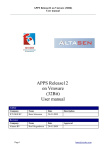
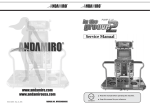
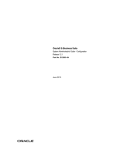
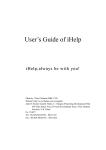
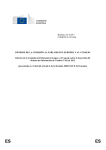
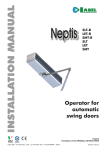

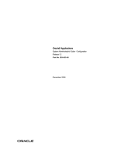
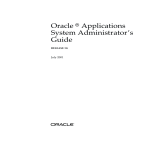
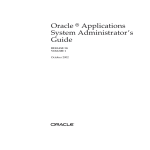
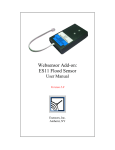
![[1 ] Oracle® Enterprise Manager](http://vs1.manualzilla.com/store/data/005669073_1-0396df232df5e560fdd03210f5126330-150x150.png)
